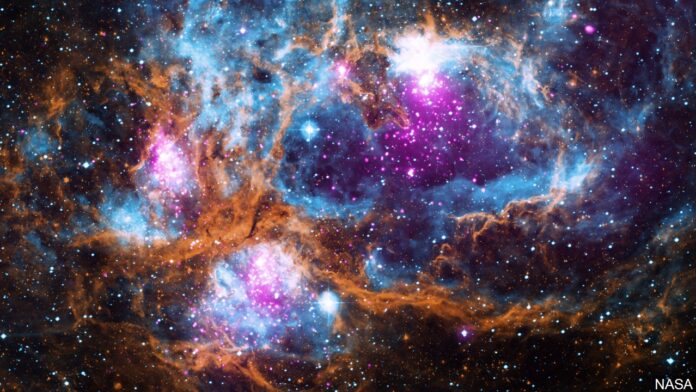Whenever I see the Palo Verde in bloom I remember being a five-year-old in Port Isabel going to the First Methodist Church with my Mom and baby brother and making May baskets to share with others. Did you ever make those as a child?
When you are out for that early evening run, gather a few stars for an imaginary basket. They are not fragrant, but they are colorful and definitely long-lasting. If the sun has set by the time that you head out, then you will be able to enjoy the view in panorama.
Since Brownsville main streets generally head east-west and north-south, that gives a perfect starting point of reference. Morning walks made before sunrise are just as filled with stars as an evening one and are usually cooler as well.
Getting your bearings is a simple matter of being able to know in which part of the sky you see sunrise and sunset; the other directions fall into place. Stand with your right shoulder where the sun rises and the left where it sets. Then your nose is pointed north-unless you are looking over your shoulder for a four-leafed clover.
Looking east in the predawn morning reveals the Summer Triangle asterism putting in an early appearance in the morning sky so that you don’t have to wait for July to enjoy the trio of constellations comprising the asterism.
Asterisms are additional patterns of stars that lie within traditional constellations that form a secondary group. In the case of the Summer Triangle, the constellations are Lyra the Lyre, Cygnus the Swan, and Aquila the Eagle. The brightest stars within each constellation, Vega, Deneb, and Altair, form a triangle.
Vega (VEE-guh) is a blue-white, main sequence star in the same class as winter’s champion, Sirius. It is about three times larger than our sun and is about 27 light years away from Earth. Lyra is (LYE-ruh) will appear as a small trapezoid of mostly faint stars. It is sometimes mistaken for the Little Dipper or the Pleiades by folks unfamiliar with what constellations will be where and when.
Deneb is also a brilliant super giant blue-white star, sixty thousand times more luminous than our sun, appearing less bright because it is 1600 light years away with a mass of 25 times that of the sun. Scientists expect this type of star to exhaust their energy in a “few million years” before swelling up into a red giant star.
Cygnus, the home location of Deneb, resembles a cross and is also called the Northern Cross, certainly appropriate to be in the sky during this time of the year. Scanning the Swan with binoculars will reveal myriad stars forming the Milky Way.
The Galactic Equator lies along the Swan and our Sun is located in the so-called Cygnus Arm of the Milky Way galaxy. Our home base, so to speak.
There was so much haze in the sky this past week that star-gazing was limited to a few of the brighter stars, one of which was Arcturus. That star is amazing and has an interesting “back-story”. During the 1893 light from Arcturus was used to turn on the lights at the Columbian Exhibition because it electricity was a novelty and a wonderful way to open the great exhibit.
In 1933 the light from Arcturus was again used to turn on the lights for the Chicago Exhibition “A Century of Progress”. As the light entered a telescope at the famous Yerkes Observatory it activated a photo-electric cell that traveled the wiring to switch on the lights. What an exciting thing it must have been to be there and watch the crowd.
Until next week, DO let some stars get in your eyes.




